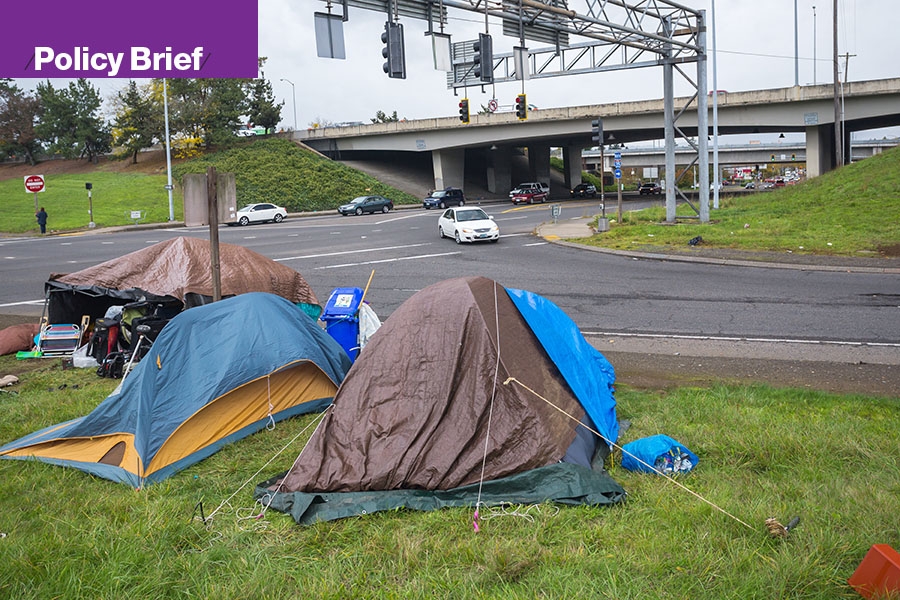Employers can play a role in helping to boost affordable housing supply.
It’s no secret that Oregon is facing a housing crisis in every corner of our state — from the Portland metro area to rural communities and everywhere in between.
Homelessness is on the rise, and those who have secured a place to live are increasingly cost burdened, many spending as much as 50% or more of their income on housing.
Our council serves Bend and the Central Oregon region, an area hit hard by the housing crisis — due in large part to our population growth and the fact that wages are lower than the state average.
While building our economic development strategy, housing emerged as the region’s No. 1 need in nearly every community.
In response, we built a new regional housing consortium, Housing for All, which sets out to better understand the issue through a Regional Housing Needs Assessment.
Our assessment found the following:
• The housing crisis inhibits economic growth, impacts household and community well-being, contributes to rising homelessness, and increases burdens on education, health, and law enforcement agencies.
• Single-family homes represent 73% of the regional housing stock, and this form of housing is not affordable for many households. And while building activity has increased since the 2008 recession, it hasn’t kept up with population growth. Between 2010 and 2016, Deschutes County produced only 0.85 units per new household, and Jefferson County produced only 0.28 units per new household.
• Nearly half the region’s renters are considered to be cost burdened — more than 30% of their household income is spent on housing-related costs, and just more than 25% are considered “severely” cost burdened, spending 50% or more of their household income on housing.
• Seventy-eight percent of black households and 46.1% of Hispanic households experience “housing needs” compared with 37% of white households.
The message from our assessment is that low-income and minority households are bearing the brunt of this crisis. Twenty-four thousand households earning up to 80% of area median income are cost burdened or have other issues, such as overcrowding or lacking critical facilities like plumbing or a stove.
This picture is not pretty, and can seem insurmountable when looking at it from just one perspective. But the very breadth of the issue suggests an appropriate means to address it.
Since the housing crisis impacts not only families but also employers, local governments, health care, law enforcement, education, social service agencies — we should build integrated solutions that leverage the expertise and resources of all of the sectors that are impacted by it. It is not just the problem of developers and housing agencies; it is all of our problem.
We have endorsed a list of six priorities that we feel will best meet our needs:
1. Subsidies and incentives to developers to produce more affordable housing and reduce the cost of infrastructure. This is an array of tools including building code exemptions and density bonuses, reduced system development charges, public land donations and modified design standards.
2. Support employer-assisted housing programs. Identify housing needs for regional employers, and work with them to develop employee housing, or to support their employees’ access to housing through forgivable mortgage down-payment loans and rent assistance.
3. Provide safe parking areas for people living out of vehicles. Designate safe parking areas and provide basic services. This reflects the fact that “cleaning out” areas where individuals and families are living out of vehicles usually means just displacing them to another area.
4. Create a low-income rental fund. This fund would serve two purposes: 1) provide funds for low-income households to pay for up-front rent deposits and fees; 2) a landlord risk-mitigation fund to reduce landlord risk in housing target populations.
5. Promote a policy of building supportive housing as a percentage of overall affordable-housing units. This reflects the fact that a percentage of the hardest to serve are frequent users of emergency rooms and jail cells, and that low-barrier housing with support services is a far cheaper and more humane way to stabilize these individuals and reduce overall costs to society.
6. Develop regional housing councils. These councils would serve as a means to build cross-sector partnerships among all the parties that must work together to address this crisis. The councils would allow for each interest group to engage with regional leaders to formulate solutions that match the complexity of the problem — and to focus their efforts and energies on those that need help the most — low-income households.
Pointing a finger at who is to blame for the housing crisis won’t solve it — we need to work together as communities, regions and a state to develop integrated solutions. It will take a community to serve our mutual interest — providing safe and affordable housing to every Oregonian.
Tammy Baney is executive director and Scott Aycock is community and economic development manager for Central Oregon Intergovernmental Council.








